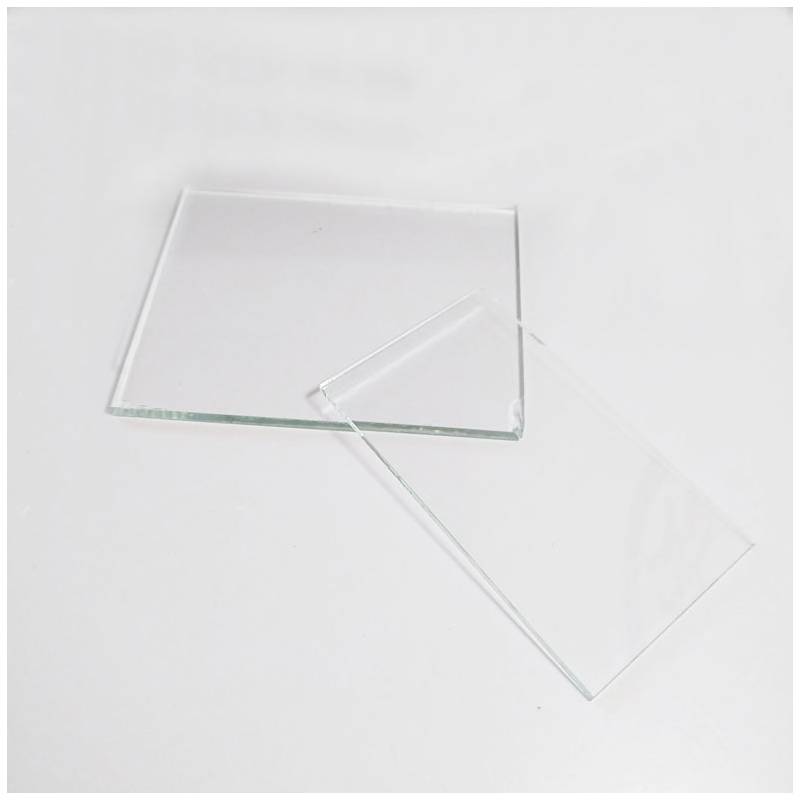The Difference Between Regular Glass and Tempered Glass
When it comes to selecting the right type of glass for various applications, understanding the differences between regular (also known as annealed) glass and tempered glass is crucial. Each type of glass has unique properties, advantages, and disadvantages that make them suitable for specific uses. In this article, we will explore how these two types of glass differ from each other in terms of manufacturing processes, strength, safety, and applications.
Manufacturing Process
Regular glass, or annealed glass, is made by heating raw materials, such as silica sand, soda ash, and limestone, to high temperatures in a furnace. Upon cooling, this glass is characterized by a uniform structure. However, it is relatively weak and can break easily under stress or impact.
Tempered glass, on the other hand, undergoes a different manufacturing process that involves heating the glass to over 600 degrees Celsius and then rapidly cooling it. This process, known as tempering, creates a glass that is significantly stronger than regular glass. The rapid cooling puts the outer surface of the glass into compression while keeping the interior in tension, providing enhanced strength and resistance to thermal stresses.
Strength and Durability
One of the most significant differences between regular glass and tempered glass is their strength. Tempered glass is about five to ten times stronger than regular glass of the same thickness. This makes tempered glass an ideal choice for applications where strength and durability are critical, such as in shower doors, glass doors, and glass shower enclosures.
Additionally, tempered glass can withstand higher temperatures and sudden temperature changes without breaking. Regular glass, however, is more susceptible to thermal stress and can shatter easily if exposed to rapid changes in temperature. This vulnerability makes tempered glass a safer option for areas with temperature fluctuations, such as kitchen countertops or facade glass in buildings.
what is the difference between regular glass and tempered glass
Safety
Safety is another major area where tempered glass outshines regular glass. When annealed glass breaks, it shatters into sharp, jagged shards that can cause serious injury. In contrast, soaked in intense heat during the tempering process, tempered glass fractures into small, blunt pieces that are far less likely to cause harm. Consequently, tempered glass is often used in environments where safety is paramount.
Common applications of tempered glass include commercial buildings, glass facades, and car windows where the risk of breakage is high. The safety factor of tempered glass makes it a preferred choice for residential and commercial construction alike.
Applications
The choice between regular and tempered glass largely depends on the application. Regular glass is more cost-effective and suitable for non-structural uses, such as picture frames, basic windows in low-impact areas, and decorative purposes where safety is not a critical concern.
Tempered glass, while more expensive, is essential in applications that require higher strength and safety standards. It is commonly used in high-rise building windows, glass railings, skylights, commercial appliances, and any situation where enhanced structural integrity is essential.
Conclusion
In summary, the differences between regular glass and tempered glass stem from their manufacturing processes, strength, safety features, and applications. While regular glass may serve basic functions with cost-effectiveness in mind, tempered glass offers significant advantages in terms of durability and safety, making it suitable for a wide range of environments. Understanding these differences can aid consumers and contractors in making informed decisions when selecting glass types for their specific needs, ensuring that all safety and practical considerations are adequately met. Whether for a home or a commercial project, choosing the right type of glass is key to achieving both aesthetic appeal and structural integrity.
 Afrikaans
Afrikaans  Albanian
Albanian  Amharic
Amharic  Arabic
Arabic  Armenian
Armenian  Azerbaijani
Azerbaijani  Basque
Basque  Belarusian
Belarusian  Bengali
Bengali  Bosnian
Bosnian  Bulgarian
Bulgarian  Catalan
Catalan  Cebuano
Cebuano  Corsican
Corsican  Croatian
Croatian  Czech
Czech  Danish
Danish  Dutch
Dutch  English
English  Esperanto
Esperanto  Estonian
Estonian  Finnish
Finnish  French
French  Frisian
Frisian  Galician
Galician  Georgian
Georgian  German
German  Greek
Greek  Gujarati
Gujarati  Haitian Creole
Haitian Creole  hausa
hausa  hawaiian
hawaiian  Hebrew
Hebrew  Hindi
Hindi  Miao
Miao  Hungarian
Hungarian  Icelandic
Icelandic  igbo
igbo  Indonesian
Indonesian  irish
irish  Italian
Italian  Japanese
Japanese  Javanese
Javanese  Kannada
Kannada  kazakh
kazakh  Khmer
Khmer  Rwandese
Rwandese  Korean
Korean  Kurdish
Kurdish  Kyrgyz
Kyrgyz  Lao
Lao  Latin
Latin  Latvian
Latvian  Lithuanian
Lithuanian  Luxembourgish
Luxembourgish  Macedonian
Macedonian  Malgashi
Malgashi  Malay
Malay  Malayalam
Malayalam  Maltese
Maltese  Maori
Maori  Marathi
Marathi  Mongolian
Mongolian  Myanmar
Myanmar  Nepali
Nepali  Norwegian
Norwegian  Norwegian
Norwegian  Occitan
Occitan  Pashto
Pashto  Persian
Persian  Polish
Polish  Portuguese
Portuguese  Punjabi
Punjabi  Romanian
Romanian  Russian
Russian  Samoan
Samoan  Scottish Gaelic
Scottish Gaelic  Serbian
Serbian  Sesotho
Sesotho  Shona
Shona  Sindhi
Sindhi  Sinhala
Sinhala  Slovak
Slovak  Slovenian
Slovenian  Somali
Somali  Spanish
Spanish  Sundanese
Sundanese  Swahili
Swahili  Swedish
Swedish  Tagalog
Tagalog  Tajik
Tajik  Tamil
Tamil  Tatar
Tatar  Telugu
Telugu  Thai
Thai  Turkish
Turkish  Turkmen
Turkmen  Ukrainian
Ukrainian  Urdu
Urdu  Uighur
Uighur  Uzbek
Uzbek  Vietnamese
Vietnamese  Welsh
Welsh  Bantu
Bantu  Yiddish
Yiddish  Yoruba
Yoruba  Zulu
Zulu 

